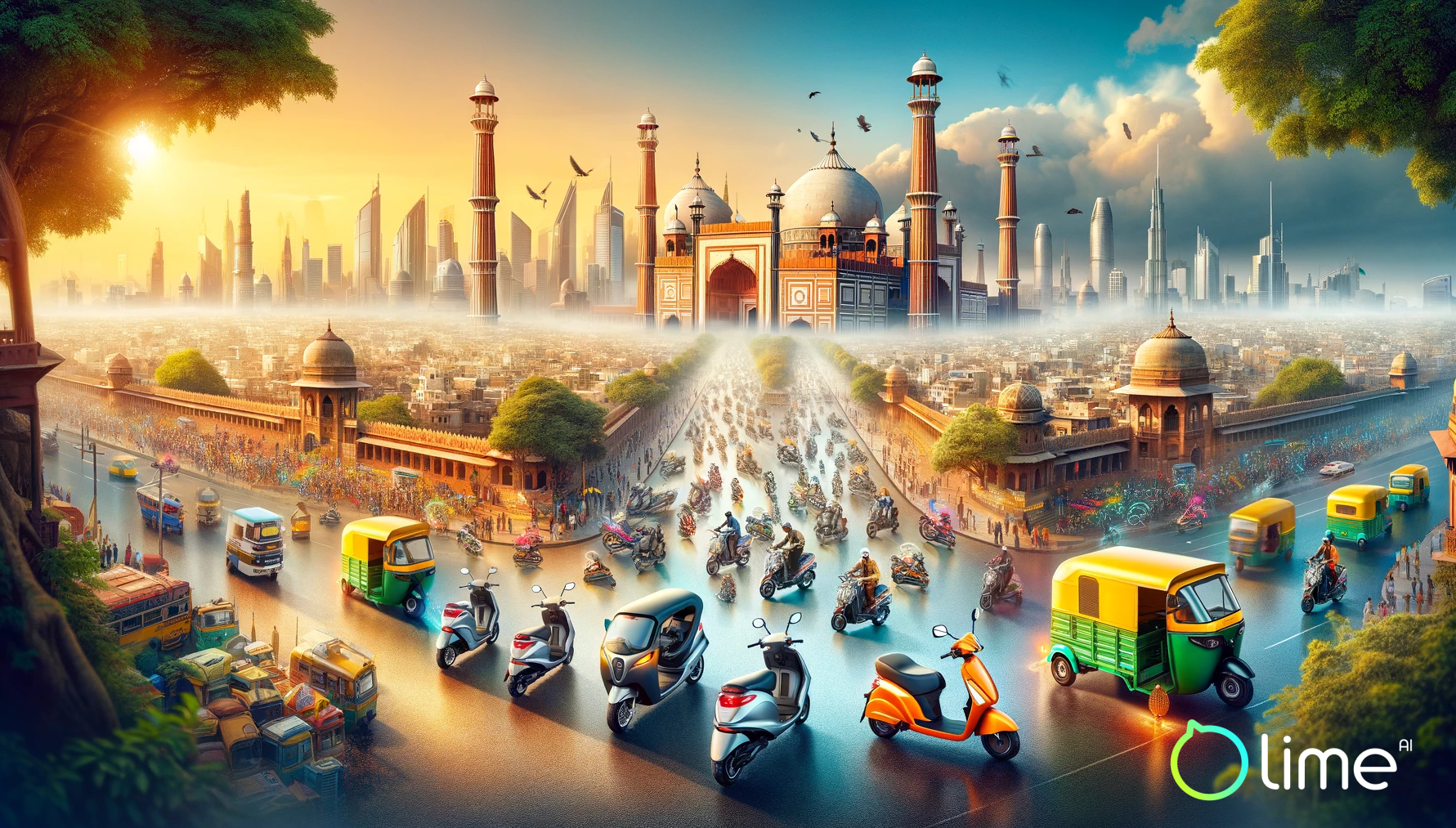Introduction
India's rapid urbanization and burgeoning need for mobility solutions have set the stage for an unprecedented transformation in the automotive sector, particularly in the 2-wheelers (2Ws) and 3-wheelers (3Ws) market. At the heart of this transformation are lithium-ion batteries, with Nickel Manganese Cobalt (NMC) and Lithium Iron Phosphate (LFP) chemistries leading the charge. This article delves into the current landscape, key trends, and the future outlook of battery-powered vehicles in India, using real data and insights.
Current Landscape
India, with its vast population and growing urban middle class, has seen a significant uptick in the adoption of electric vehicles (EVs), especially 2Ws and 3Ws. These vehicles are not only more cost-effective and environmentally friendly but also align with the government's push towards reducing carbon emissions. According to the Society of Manufacturers of Electric Vehicles (SMEV), the sale of electric 2Ws and 3Ws in India saw a remarkable increase, with over 152,000 electric 2Ws and 143,000 electric 3Ws sold in the fiscal year 2020-2021, demonstrating a robust growth trajectory.
The adoption of electric vehicles has been on the rise globally, driven by a combination of environmental concerns, government incentives, and advancements in technology. Many major automakers have been investing heavily in electric vehicle development.
Improvements in battery technology have been a key driver for the electric vehicle market. Lithium-ion batteries dominate the market, but there are ongoing efforts to develop next-generation batteries with higher energy density, faster charging times, and lower costs.
The electric vehicle market has become highly competitive, with both traditional automakers and new entrants vying for market share. Tesla, as a pioneer in the field, has played a significant role in driving interest and competition.
Lithium Battery Adoption: NMC vs. LFP
The choice of battery technology plays a pivotal role in the performance, range, and safety of EVs. In India, NMC and LFP batteries are the two leading chemistries used in 2Ws and 3Ws.
The choice between Nickel Manganese Cobalt (NMC) and Lithium Iron Phosphate (LFP) batteries involves considerations of performance, cost, safety, and specific application requirements. Both battery chemistries are used in various applications, including electric vehicles (EVs), renewable energy storage, and portable electronics. Here are some key differences between NMC and LFP batteries
Generally, NMC batteries have a higher energy density compared to LFP batteries. This means they can store more energy per unit of weight.Lithium Iron Phosphate batteries have a slightly lower energy density but are known for their safety and longer cycle life.
NMC Batteries
Known for their high energy density, NMC batteries offer longer ranges and reduced weight, making them suitable for 2Ws where performance and agility are key. However, their higher cost and concerns over thermal stability are notable drawbacks.
NMC batteries typically have a good cycle life, but it may be somewhat lower than LFP batteries.
LFP Batteries
LFP batteries, on the other hand, are prized for their safety and longevity. Their thermal stability and resistance to abuse conditions make them a preferred choice for 3Ws, which require durability over long usage periods. Although they have a lower energy density compared to NMC, their cost-effectiveness and longer life cycles are significant advantages.
Lithium Iron Phosphate batteries are known for their excellent safety profile. They are less prone to thermal runaway and are considered more stable under high-temperature conditions.
Key Insights and Trends
Government Initiatives and Subsidies: The Indian government's Faster Adoption and Manufacturing of Hybrid and Electric Vehicles (FAME) India Scheme has been a crucial driver for EV adoption, offering subsidies on the purchase of electric vehicles. This initiative, coupled with the production-linked incentive (PLI) scheme for advanced chemistry cell (ACC) battery storage, is set to bolster local manufacturing and reduce dependency on imports.
Market Adoption and Consumer Preferences: Consumer preference is gradually shifting towards electric 2Ws and 3Ws, driven by lower operating costs and increasing awareness of environmental issues. The introduction of battery swapping and leasing models, particularly for 3Ws, is addressing range anxiety and upfront costs, further accelerating adoption.
Local Manufacturing and Supply Chain Development:
With the aim of reducing costs and dependency on imported cells, there is a growing focus on establishing a local EV ecosystem. Companies are investing in the local production of battery packs and components, with several startups and established players entering the battery manufacturing space.
Challenges and Opportunities
Despite the positive trends, challenges such as the development of charging infrastructure, battery disposal, and recycling need to be addressed. The opportunity lies in innovating battery technologies, improving the supply chain, and creating policy frameworks that support sustainable growth.
The Road Ahead
The future of India's 2Ws and 3Ws looks electric, with lithium-ion batteries at its core. As technology advances and costs continue to decrease, the penetration of electric vehicles in the Indian market is expected to grow exponentially. The shift towards NMC and LFP batteries, supported by government policies and consumer acceptance, is not just a trend but a transformation that will redefine India's mobility landscape.
Conclusion
" In conclusion, the electrification of 2Ws and 3Ws in India is a promising avenue for reducing urban pollution and promoting sustainable transportation. With the right policies, infrastructure, and technology in place, India is on the path to becoming a global leader in the electric vehicle revolution. "
